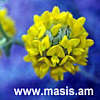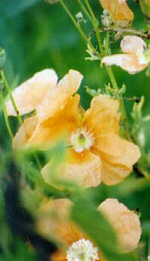Armenia by Regions
Overview
TourArmenia -
This section will cover Armenia's ecology region by region.
Use the side links on the right to see each region.
OVERVIEW
Lakes, Reservoirs
A huge underground lake lies below the Ararat Valley. The Valley was recorded as early as the Assyrian Period as being a rich, forested marshland, with cultivated lakes. Lake Sevan (alt. 1897m/6222f), with a total water surface of 1256 sq. kilometers is one the largest high altitude lakes it the world. The lake is fed by 28 rivers and streams, thousands of years of melting snow from the surrounding mountains and scattered rainfall in the Spring and early summer. As the source for the second largest river in Armenia, the Hrazdan, Lake Sevan literally is the source of life for the largest part of the Armenian population.
Rivers
Major rivers include the Kasakh (89 km), Hrazdan (146 km), Azat (56 km) and Vedi (58 km) in the Ararat Valley, feeding into the Arax river (158 km) that orders Turkey; in Vayots Dzor the Darb (20 km), Yeghegis (54 km) and Arpa (90 km); in Siunik the Vorotan (119 km), Voghji (56 km) and Meghri (32 km); in Shirak District the Akhurian (210 km) and the Mantash (90 km); in Lori the Dzoraget (57 km) and Pambak (86 km) join to form the source of the Debed (152 km); in Tavoush the Koghb (25 km), Joghaz (57 km), Aksipara (21 km), Sarnajur (23 km), Spitakjur (10 km) Urtijur (19 km) all feed into the Aghstev (99 km) which runs to the Kur River in Azerbaijan (the Kur eventually joining the Arax).
Sevan Lake is fed by 28 rivers, including the Masrik (43 km), Boydara (16 km), Vardenis (28 km), the Argichi (51 km) fed by the Karadzi (22 km), the Martuni (12 km), Tzakkar (23 km) and the Kukudzor (11 km) joining the Gegharkunik (51 km). In turn the Sevan is the source of the Hrazdan River, which flows through Kotaik District into the Ararat Valley.
There are countless mountain streams that feed this extensive river system which runs in virtually all directions as they deliver melting snows, spring and rain water into the valleys and mountain plateaus. Several rivers have been diverted into lakes and reservoirs, which form the bulk of the irrigation and drinking water for the country.
Thermal and Mineral Springs
There are more than 20,000 (some say 40,000) natural springs in Armenia. The springs (including mineral and thermal springs) supported a thriving health and spa ("Sanatorium") industry in the 1980's, and make up one of Armenia's most promising tourist attractions. At present most mineral springs are relatively undeveloped, except the spa areas around Jermuk and Hankavan. Even there the cost of a spa treatment is as low as $10-15 a day (meals and lodging included). Thermal springs lie throughout the country, but Siunik and Vayots Dzor are home to the most popular (and the warmest recorded) springs. The most famous is perhaps Jermuk, with naturally carbonated sulfur thermal springs (37-42C / 99-108 F). Other springs at Jermuk include a calcium-sulfur cold water spring (4-20 C/39-68 F), and purified spring-fed thermal Jacuzzi's and baths (20-37 C/68-99F). Hankavan has several natural mineral springs in the area, the warmest at the Hankavan Spa (20-37C/68-99 F), which is currently closed. Not to worry, as the springs run off into the Marmarik River, and locals regularly gather for a quick soak. Another popular warm water spring spa is located at Arzni, just north of Yerevan. The waters and newly privatized spas are working.
Minerals, Stones, Gems
Armenia is particularly rich with high-grade stone, and from earliest of times it was used to construct temples, cyclopic walls, palaces, homes, churches, even to pave the streets of its Greco-Roman cities. Armenia holds some 3 billion cubic meters of tuf, an easily cut yet resilient material, and most buildings from the early Christian period forward are made from the orange, red, gold and black varieties of tuf. Other stone in the country include basalt, granite, marble, limestone, perlite, andestie, perlite, limestone, agate, pumice and gypsum. Also cooked up in the country were iron, polymetals, aluminum, molibden, tungsten, diatomite, gold, silver, copper, tin, mercury, barium, sulfur, bentonite, sodium chloride, among other minerals. Semi-precious and precious stones found in Armenia include obsidian, amethyst, andesite, andelusite, emerald, garnet, beryl, turquoise, several grades of quartz, carnelian, aquamarine, lapis lazuli and diamonds.
Flora
Armenia has over 3,500 species of plants, more than half of the 6,000 that can be found in the entire Transcaucasus region. While Europe has around 20,000 species, and the entire North American continent holds 40,000 species, with a total landmass of just under 30,000 sq. kilometers (about the size of Belgium), Armenia's diversity and close proximity of so many different types of flora is often breath-taking.
Native to Armenia are the apricot and peach. The apricot was taken by Alexander the Great's army back to Greece, where the Romans then spread it througout Southern Europe. Other fruits that grow in the country include apples, pears, cherries, mazzards, plums, pomegranites and an amazing variety of grapes.
Birds
Armenia has an extraordinary 349 species of birds. By comparison, the whole of Europe has 550 species and the entire landmass of the former Soviet Union has 750. Of the 29 orders and 187 families of birds worldwide, Armenia is home to 18 orders and 58 families. The country lies on the main migration route between the Northern and Southern Hemispheres, with species flying from as far away as South Africa. With its diverse terrain and vegetation zones overlapping each other in such a compact area, Armenia attracts diverse bird species that do not normally inhabit the same terrain.
Other Fauna
Armenia holds a large diversity of fauna, including the Wild Armenian Goat, Deer, Wild Ram, Leopard, Caucasian Bear (all endangered), lynx, wildcat, Reed Wildcat, Wild Bore, Porcupine, Squirrel, Jackal, Mole, Prairie Dog, Marten, Royal Stag and Nutria. Other species normal to vegetation zones elsewhere will be found in Armenia. Unique fish found in Armenia are the Ishkhan (red-spotted trout) and Sig. Also prominent is the Armenian Shepherd Dog, linked in mythology to Armenia's ancestry.
Armenia is also home to over 17,000 insect species, including hundreds of endemics.
There are six species of bats in Armenia: Rhinolophus euryale, Rhinolophus mehelyi, Myotis nattereri kuhl, Barbastella leucomelas, Miniopterus schreibersi kuhl and Tadaria teniotis rat. Bats are categorized in Latin as Vespertilio , in the order Chiroptera, with suborders Desmodus, Diphylla and Diaemus. Fruit bats are known as Megachiroptera.
Reptiles
The country has numerous reptiles, including lizards and a variety of snakes, and one of the rare finds in Armenia, the Loti. Looking every bit like a lime green snake, loti actually has gills for breathing, and projections where a million years ago or so it had legs. Harmless, the loti is endangered and listed on the Red Book, an official listing of endangered species in the former Soviet Union.
Snakes include the Moghesakul (Lizard Eater, sand and earth colors), Poloz (Long Head, different colors by habitat), Haikakan Eezh (Armenian Eel, black and ochre), Shahhmarzh (rose and tuf color), Jerayin Eezh (Water Eel, Black, white w/yellow rim under head) and Haikakan Vishap (Armenian Dragon, grey and black tones). The Haikakan Vishap hsa a distinct shape which has been incorporated into carpet designs (the so-called "Dragon carpets" incorporate designs using the Vishap Snake as inspiration), and the Giurza.



LINKS
Images (photos
by Tigran Nazarian)
EcoCenter
Ecotourism.com
(currently down, but try in case)
EcoTeam
Development
Armenian Flora/Fauna Stamps
Climate
Change Info Center-Armenia
ERMC
National Academy of
Sciences of Armenia
Protected
Areas of Armenia
Map
of Sevan National Park
INDIVIDUAL REPORTS
Threatened
Species in Armenia
State
of Environment Report 2000 (UN)


 write TourArmenia -
write TourArmenia -
 Top
Top

|





